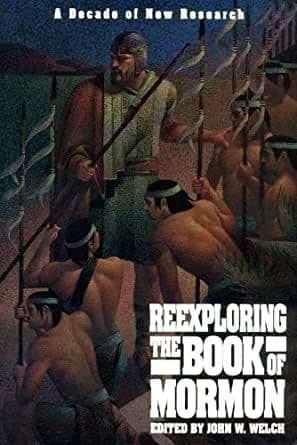Book
85 Chapters

John W. Welch
Helaman 7:15 “Because of my mourning and lamentation ye have gathered yourselves together.”
It was not uncommon for early Israelite prophets to use example. When Jeremiah wanted to impress the people of Jerusalem with his prophecy that they would be yoked into bondage by the Babylonians, he draped himself with thongs and a yoke and thus went forth proclaiming his message of doom (see Jeremiah 27:2-11). Other similar symbolic or parabolic acts performed as prophetic oracles are found in Jeremiah 13:1-11 (hiding a waistcloth), Jeremiah 19:1-13 (smashing a bottle), 1 Kings 11:29-39 (tearing a garment into twelve pieces), 2 Kings 13:15-19 (shooting an arrow), and Isaiah 20:2-6 (walking naked).
Is it possible that Nephi’s sermon in Helaman 7-8 was similarly staged as a prophetic allegory in the form of some kind of a funeral sermon?
Nephi, the son of Helaman II, had just returned from a disappointing mission to the land northward. At his ancestral home in the city of Zarahemla, he was further dismayed at the “awful wickedness” of the people there (Helaman 7:4). Nephi’s first stated reaction was to remember his deceased ancestors who had lived in the days of Lehi (see 7:7-8). Next he positioned himself conspicuously on top of a tower in his garden near a main highway. There his behavior somehow attracted a large crowd (see 7:10-12). He then delivered a powerful message on repentence (see 7:13-29) and the impending coming of Christ (see 8:11-24). His status as a true prophet was finally confirmed by his correctly prophesying the assassination of a wicked chief judge (see 8:25-28).
Several clues indicate that Nephi may have attracted attention to his message by carrying on as if someone had just died.
1. Nephi was in “great mourning” (7:11) and “lamentation” (7:15). Mourning generally means more than just feeling sorry or crying privately. One can imagine Nephi dressed in traditional Nephite mourning attire (whatever that might have been), gesticulating on top of his tower perhaps in motions of bereavement. Onlookers would have wondered immediately who in the important aristocratic household of the great Alma’s descendants had just died.
2. He continued with this conduct for a fair amount of time—at least long enough for people to go tell many others in town who then turned out in multitudes (see 7:11). If during this time Nephi was conducting a recognizable mock mourning or funeral ceremony, this would have been quite a curiosity.
3. Whatever he did, it was something of a public spectacle that worked the crowd into a state of awe, for Nephi told them they indeed had “great need to marvel” (7:15).
4. The tower would probably have been a pyramid or similar structure. Typically, such mounds were used for burials, as well as for prayer. If Nephi’s tower was the family burial site, his reference to the righteousness of his ancestors in his allegorical funeral for the Nephite nation would have been all the more poignant.
5. If Nephi was mourning and lamenting, the crowd would have wondered, of course, who had died. It would have struck them personally, therefore, when Nephi began decrying their iniquities (see 7:13-14). Moreover, since he speaks later of “murder” (7:21; 8:26), it is possible that he spoke the word “murder” as he poured out his soul to God while the crowd was gathering.
6. Nephi surprised the crowd when he asked them, “Why will ye die?” (7:17). Unless they repent, he told them, God will turn them into “meat for dogs and wild beasts” (7:19), and their souls will be hurled to everlasting misery (see 7:16). Nephi predicted slaughter and utter destruction at the hands of enemies (see 7:22, 24) and prophesied that the people would be “destroyed from off the face of the earth” (7:28).
7. Nephi then cited examples of people who had been delivered from death (see 8:11-19) and spoke of other destroyed peoples. Thus, the themes of death and deliverance from death characterize Nephi’s words throughout this speech.
8. Nephi concluded by being specific. For one person in particular, Nephi’s funeral may have been more than mere allegory. Nephi announced prophetically the death of the chief judge in Zarahemla (see 8:27). His death not only would have validated Nephi’s words in general, but also would have presented a corpse, symbolically representing all the people of Zarahemla and potently completing the allegorical message of this apparent funeral sermon.
We cannot be certain that this is what Nephi did, but this interpretation adds a rich and interesting possibility of symbolic meaning to this text.
Based on research by John W. Welch, May 1986.
Book
85 Chapters
Items in the BMC Archive are made publicly available for non-commercial, private use. Inclusion within the BMC Archive does not imply endorsement. Items do not represent the official views of The Church of Jesus Christ of Latter-day Saints or of Book of Mormon Central.